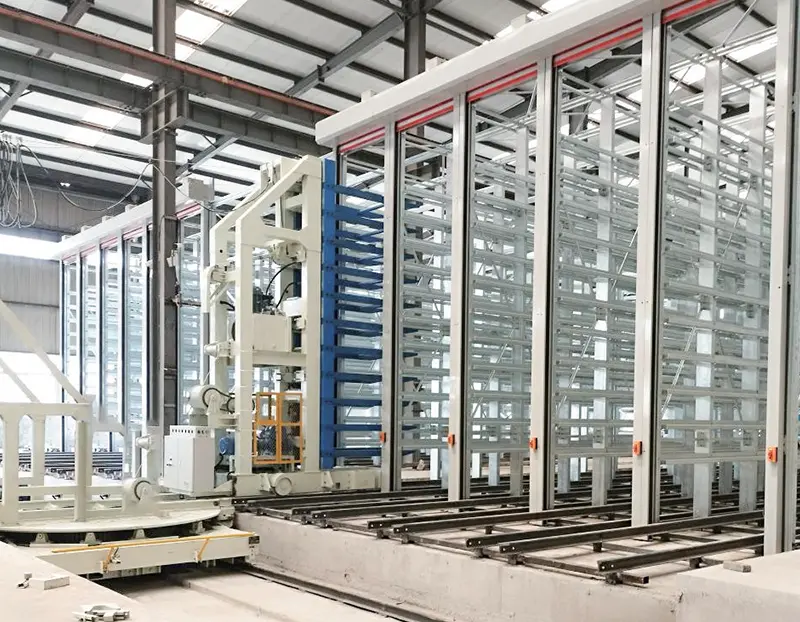What is a Curing Kiln and Why is It Essential for Modern Construction Materials?
2025-08-07
A Curing Kiln is an essential piece of equipment in the production of concrete blocks, pavers, and similar building materials. This system accelerates the curing process by providing a controlled environment of temperature, humidity, and airflow, ensuring strength development and quality consistency.
At Quangong Block Machinery Co., Ltd, our Curing Kiln system is engineered with advanced automation, energy efficiency, and modular scalability in mind. But what truly sets it apart is the performance consistency it brings to high-volume production lines.
In this article, we'll explore the working principles of a curing kiln, introduce our technical specifications, and answer some of the most frequently asked questions from industry professionals.
What is the Role of a Curing Kiln in Block Production?
The curing phase in concrete block manufacturing is critical. If not controlled precisely, it can lead to under-cured or cracked products. A Curing Kiln ensures that every batch is exposed to uniform heat and humidity, thereby optimizing the hydration of cement, improving strength, and reducing curing time from several days to just hours.
Product Features and Specifications of Our Curing Kiln
The following table highlights the key technical parameters of our latest Curing Kiln System:
| Parameter | Specification |
|---|---|
| Applicable Products | Concrete blocks, pavers, curbstones, and more |
| Chamber Structure | Modular steel frame with thermal insulation panels |
| Heating Method | Electric / Steam / Hot air circulation |
| Control System | PLC + Touchscreen HMI |
| Temperature Range | Adjustable, typically 45°C – 70°C |
| Humidity Control | Automatic water spray and dehumidification |
| Airflow System | Uniform horizontal and vertical circulation |
| Energy Efficiency Rating | Grade A – optimized for industrial savings |
| Safety Features | Overheat protection, emergency stop, lock access |
| Capacity | Up to 50 pallets per chamber (expandable) |
| Number of Chambers | 2 to 20+ (customizable based on production line) |
Key Advantages of Using Our Curing Kiln System
Below is a detailed list of benefits manufacturers experience when using our Curing Kiln system:
-
Accelerated Curing Time: Reduces the curing cycle from 48-72 hours to 6-12 hours.
-
Uniform Quality: Ensures every block reaches consistent compressive strength.
-
Reduced Cracking: Controlled environment prevents thermal or shrinkage cracks.
-
Energy Savings: Smart insulation and airflow reduce operational costs.
-
Scalability: Modular design supports expansion as production increases.
-
Remote Monitoring: Our system supports remote diagnostics and settings adjustment.
-
Low Maintenance: Corrosion-resistant materials and smart alert systems ensure long service life.
Why Choose Quangong's Curing Kiln System?
-
Proven Technology: With installations in over 80 countries, our system delivers industry-trusted results.
-
Customization: Every production line has unique needs. Our engineering team tailors chamber quantity, size, and heating method to your facility.
-
Global Support: We offer comprehensive installation, training, and after-sales support.
Common Applications of Curing Kiln
| Product Type | Application Scenario |
|---|---|
| Hollow Blocks | Wall construction |
| Solid Blocks | Foundations and load-bearing walls |
| Paving Stones | Sidewalks, driveways, landscaping |
| Curbstones | Road edges and urban planning |
| Interlocking Bricks | Decorative paths and garden edges |
Curing Kiln FAQ – Frequently Asked Questions
Q1: What are the typical curing conditions inside a curing kiln?
A1: Standard curing conditions include a temperature of 55°C–65°C and relative humidity of 90%–95%. These conditions promote efficient hydration of cement without causing surface cracks or strength inconsistencies.
Q2: Can I adjust the curing parameters for different products?
A2: Yes, our Curing Kiln system is equipped with a PLC-based control panel that allows precise adjustments of time, temperature, humidity, and fan speed based on product type and curing recipe.
Q3: What maintenance is required for a curing kiln system?
A3: Routine maintenance includes checking the insulation integrity, fan motor lubrication, water spray nozzles, and sensor calibration. Our system provides automatic alerts and a maintenance checklist to assist operators in preventing unexpected downtimes.
Conclusion: The Future of Concrete Curing Is Here
For modern concrete manufacturers, a Curing Kiln is no longer optional—it is critical. Whether you're looking to increase output, improve product consistency, or lower operational costs, investing in a high-quality curing system is the solution.
At Quangong Block Machinery Co., Ltd, we don't just supply machinery—we engineer productivity.
For more technical consultations or to get a quote tailored to your factory layout, contact us directly.



